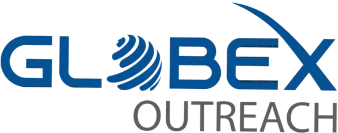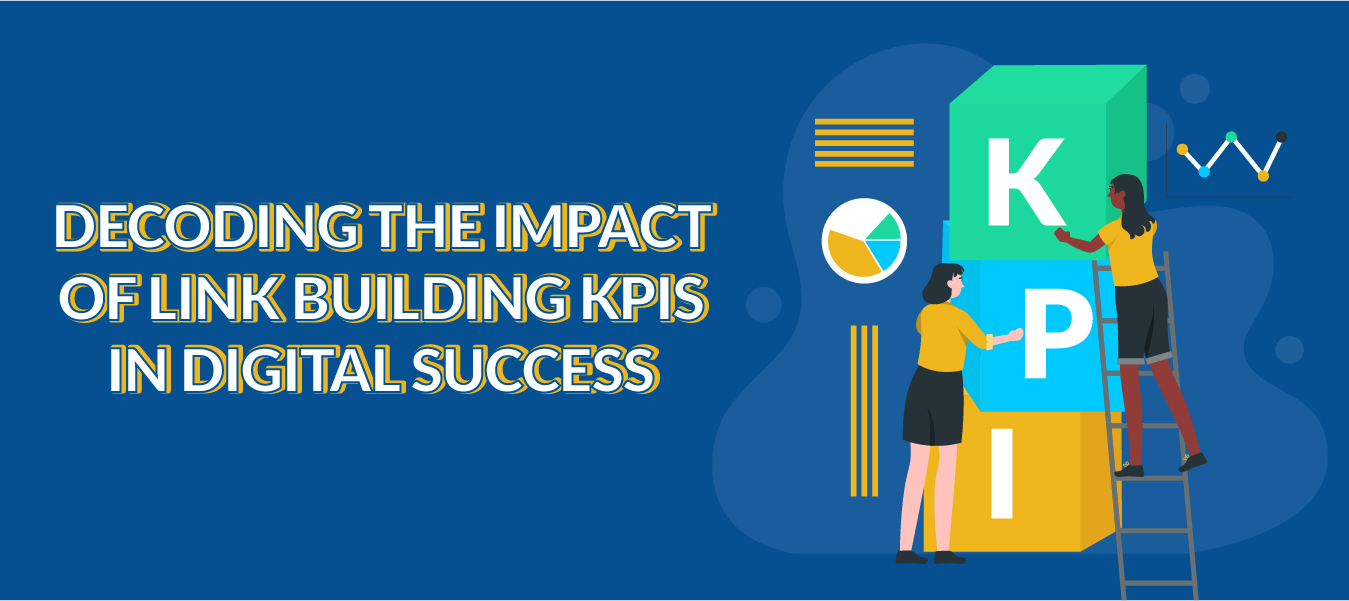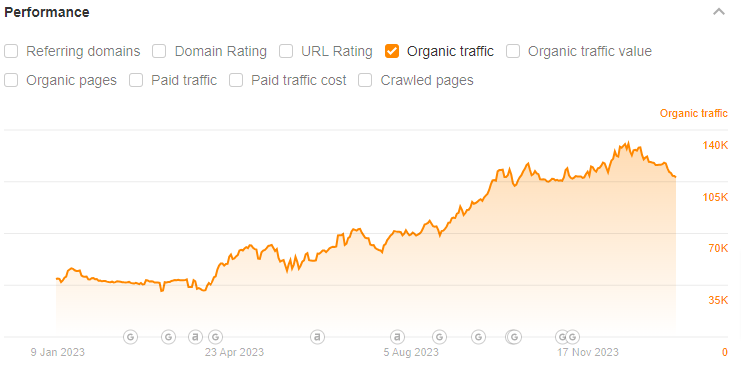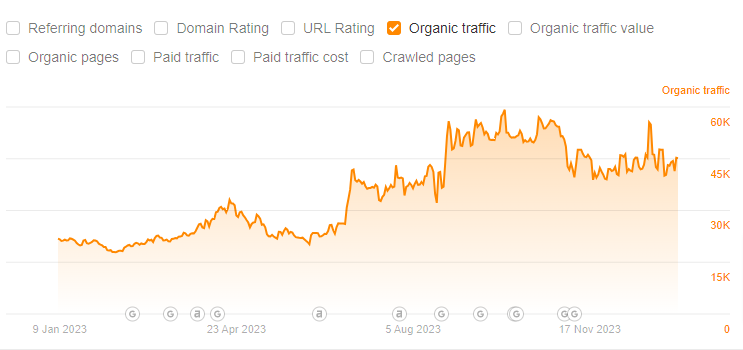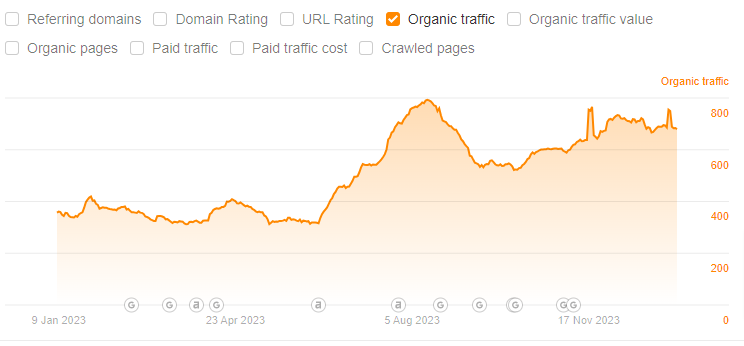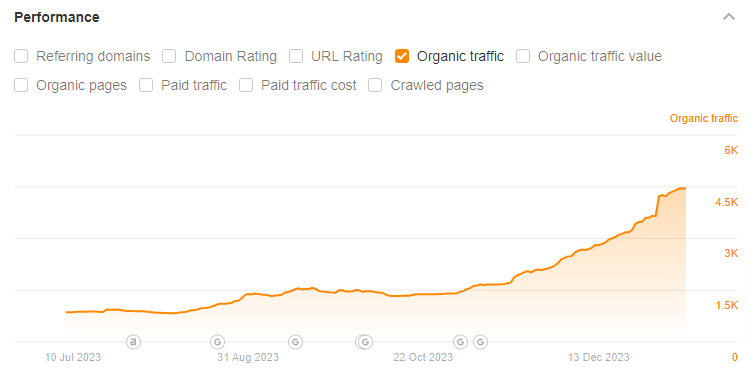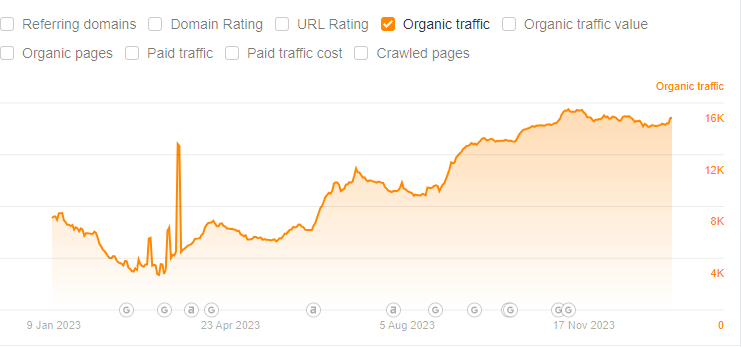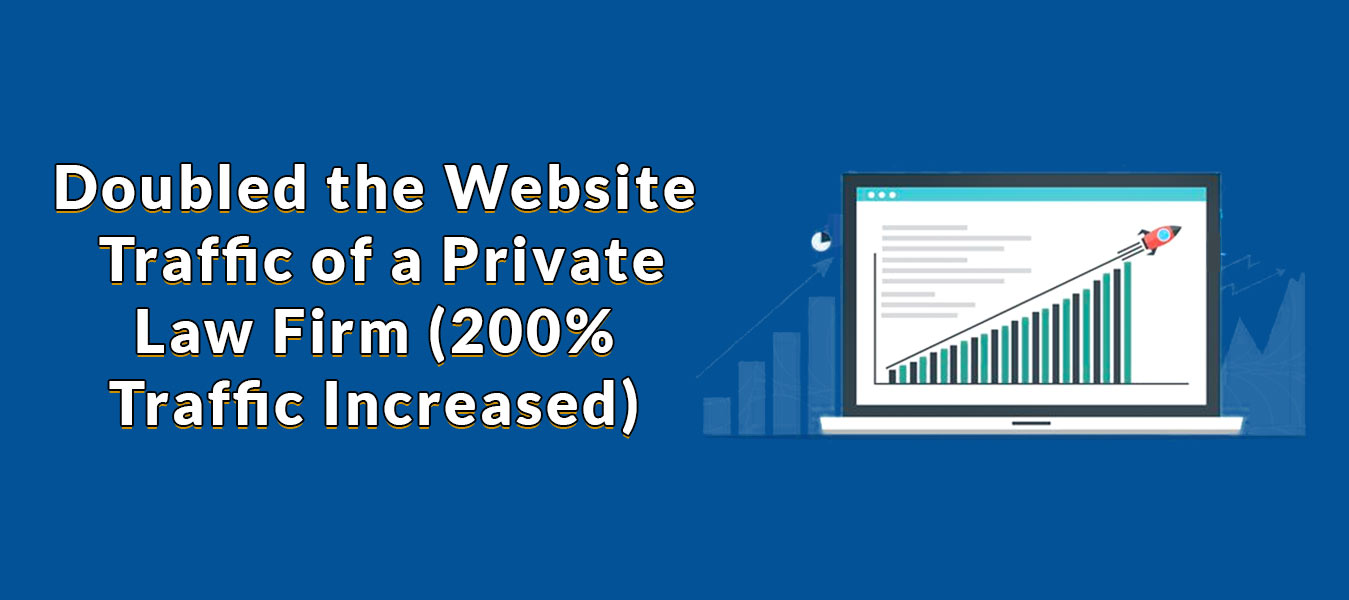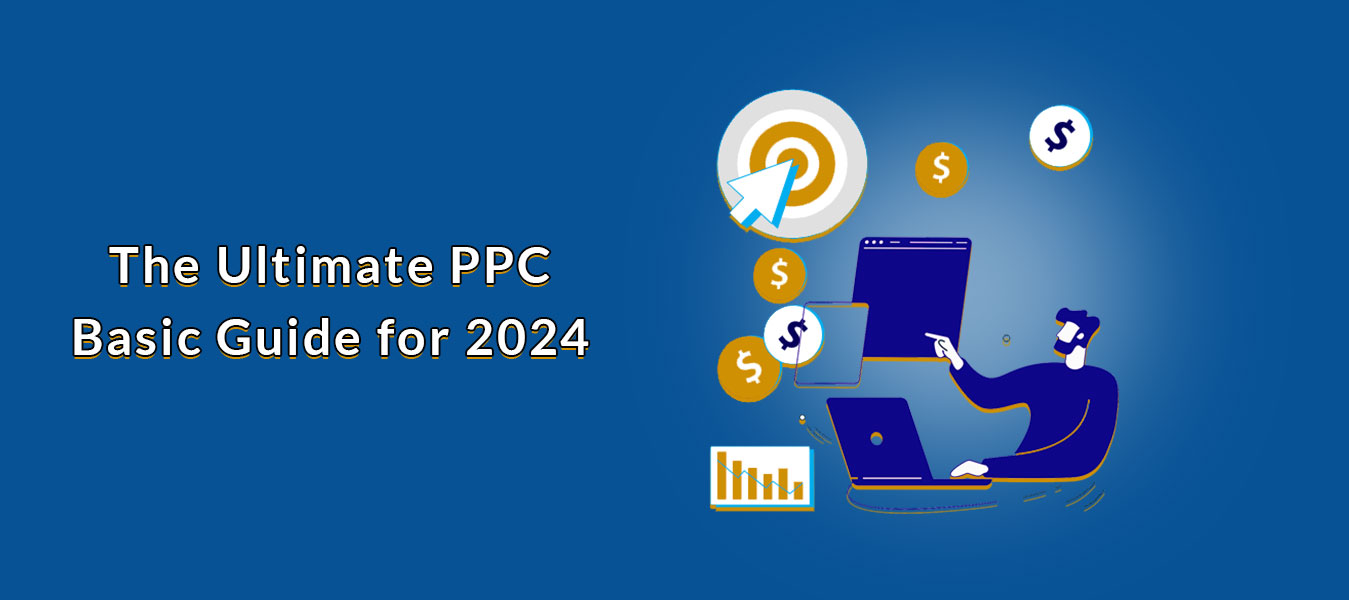Welcome to the heart of digital strategy, where understanding Link Building Key Performance Indicators (KPIs) transforms the art of link construction into a strategic masterpiece.
In the bustling marketplace of the internet, where every click holds potential and every link is a bridge to a new audience, mastering the nuances of link building KPIs is not just a choice but a necessity. These metrics are the compass, the guiding stars that navigate businesses through the tumultuous seas of online competition. They are the metrics that transform casual browsers into loyal customers, that elevate websites from obscurity to prominence, and that turn ordinary brands into digital legends.
Join us on a journey into the core of online influence, where we unravel the intricacies of link building KPIs. In this exploration, we delve deep into the significance of backlinks, dissect the anatomy of referral traffic, explore the power of Domain Authority, and decipher the language of anchor texts. As we uncover the secrets behind these metrics, we unveil the blueprint for digital success, empowering businesses and marketers alike to not just thrive but to dominate the digital landscape.
So, fasten your seatbelts and prepare for a voyage into the metrics that define online empires. From understanding the impact of social signals to decoding the patterns of linking root domains, this expedition promises not just knowledge but a transformative understanding of the dynamic world of link building KPIs. Welcome to a realm where clicks have a language, links have a purpose, and every metric tells a story — the story of digital triumph.
Table Of Content
|
30-Second Summary:
Investing in link-building is of no use at all if you don’t know all the Key Performance Indicators (KPIs) involved. Before you go on investing resources in link building, read about the link-building techniques and a complete list of important KPIs. You can then use tools like Google Search Console, Google Analytics, SEMrush, Ahrefs, and others to track these metrics. Following this approach will be useful in improving your online success and building a lasting digital legacy.
What Is Link Building?
Certainly! Link building is a fundamental aspect of digital marketing and search engine optimization (SEO) strategies. In the vast landscape of the internet, links act as pathways between different web pages. Search engines, like Google, use complex algorithms to analyze these links. When a website links to another, it’s akin to an endorsement. Search engines interpret these endorsements as signals of trust and authority. Therefore, websites with high-quality, relevant, and numerous backlinks tend to rank higher in search engine results.
The process of link building involves various techniques. One of the most common methods is natural editorial links. These occur when other websites find your content valuable and link to it without any prompting. Natural links are highly regarded by search engines because they indicate that your content is so useful or interesting that people naturally want to share it.
Another popular technique is manual outreach, where website owners or marketers actively reach out to other websites in their niche and request a link. This method often involves building relationships with other site owners and demonstrating the value your content can bring to their audience.
Additionally, broken link building is a strategy where you find broken links on other websites and suggest your content as a replacement. This approach not only helps the website owner fix their broken link problem but also provides you with an opportunity to secure a relevant backlink.
Content marketing is at the core of successful link building. By consistently creating high-quality, shareable content, you increase the likelihood of others linking to your website. Whether it’s in the form of blog posts, infographics, videos, or other multimedia content, creating valuable resources encourages organic backlinks from websites that find your content valuable for their audience.
In essence, link building is a nuanced and multifaceted process that requires a deep understanding of your target audience, industry trends, and effective communication. When executed strategically and ethically, it can significantly enhance your website’s online presence, credibility, and authority, ultimately driving more organic traffic and improving your search engine rankings.
Why Is It Important to Track Metrics for Link Building?
Tracking metrics for link building is paramount for several compelling reasons.
Firstly, measuring the effectiveness of link building strategies is crucial for understanding what works and what doesn’t. By analyzing various metrics, businesses can identify the types of content, outreach methods, and platforms that yield the best results. This data-driven approach allows for the refinement and optimization of future campaigns, ensuring that resources are allocated efficiently.
Let’s take a look at more reasons:
Optimizing Strategies and Resources
By tracking metrics, businesses can identify which link building strategies are generating the most backlinks and traffic. For instance, they might find that guest posting on specific platforms or creating interactive infographics leads to a higher number of quality backlinks. This insight enables them to focus their efforts and resources on the strategies that yield the best results, maximizing their efficiency and impact.
Understanding User Behavior
Metrics not only provide data on the quantity of traffic but also offer insights into user behavior. Analyzing metrics such as bounce rate, time spent on the site, and pages visited from referral traffic can reveal how engaged visitors are with the content. This understanding helps in tailoring the website content to meet the specific needs and preferences of the audience, enhancing user experience and increasing the likelihood of conversions.
Quality Control
Metrics help in evaluating the quality of backlinks. For instance, if a website gains numerous backlinks from low-quality or spammy sources, it can have a detrimental impact on its SEO. By monitoring metrics related to the authority, relevance, and trustworthiness of referring domains, businesses can ensure that their backlink profile remains high-quality, contributing positively to their search engine rankings.
Competitive Analysis and Market Positioning
Tracking metrics allows businesses to benchmark their link building efforts against competitors. Analyzing the backlink profiles and referral traffic of competitors provides valuable insights. Businesses can identify which websites are linking to competitors and devise strategies to approach these sources for backlinks. Additionally, understanding how competitors are engaging with their audience helps in differentiating one’s own brand and positioning it uniquely in the market.
Measuring ROI and Conversions
Metrics enable businesses to measure the return on investment (ROI) from their link building efforts. By tracking conversions, such as product purchases, email sign-ups, or downloads originating from referral traffic, businesses can calculate the revenue generated. This data is essential for assessing the cost-effectiveness of link building campaigns, allowing businesses to allocate budgets wisely to strategies that deliver tangible results.
Adapting to Algorithm Changes
Search engine algorithms frequently evolve. Metrics help in quickly identifying any changes in website traffic or rankings, enabling businesses to adapt their link building strategies accordingly. For example, if there’s a sudden drop in rankings, analyzing metrics can reveal if it’s due to a loss of backlinks, a change in user behavior, or an algorithm update. This real-time feedback loop ensures businesses can proactively respond to algorithm changes, minimizing potential negative impacts.
Enhancing Outreach and Relationship Building
Metrics can provide insights into the effectiveness of outreach campaigns. For instance, businesses can analyze email open rates, response rates, and conversion rates from outreach emails. Understanding which outreach strategies are eliciting positive responses helps in refining communication techniques, fostering better relationships with potential link partners, and increasing the likelihood of successful collaborations.
In essence, tracking metrics for link building is a multifaceted approach that goes beyond mere data analysis. It’s a strategic necessity that empowers businesses to optimize their efforts, understand their audience, maintain a high-quality backlink profile, stay competitive, measure financial returns, adapt to industry changes, and foster meaningful relationships in the digital landscape. By leveraging these insights, businesses can create a robust, adaptable, and successful link building strategy that contributes significantly to their online presence and business objectives.
What Are Some Important Link Building KPIs?
In the labyrinthine landscape of the internet, where websites jostle for attention and prominence, link building emerges as a pivotal strategy in the realm of digital marketing. Beyond mere web connections, backlinks signify a web of influence, trust, and authority. They are the endorsements and referrals of the digital sphere, shaping a website’s reputation and visibility. Understanding the metrics that govern these backlinks is akin to deciphering the language of the online world—a language that search engines like Google fluently speak. These metrics, intricate and multifaceted, hold the key to a website’s SEO success.
From the sheer quantity of backlinks to the nuanced diversity of anchor texts, each metric weaves a story about a website’s digital presence. In this exploration, we delve deep into the metrics that define effective link building strategies. By dissecting these metrics, we unravel the secrets behind a website’s online authority, dissecting the significance of metrics like Domain Authority and Page Authority, analyzing the traffic flow from referring domains, and understanding the art of anchor text diversity. As we navigate through these metrics, we unlock the strategies that elevate a website’s credibility, ensuring it not only survives but thrives in the competitive digital ecosystem.
Join us as we decipher the language of backlinks, demystify the complexities of SEO, and uncover the science behind a website’s digital resonance.
Number of Backlinks
The sheer volume of backlinks to your website signifies its popularity and influence in the online sphere. Each backlink represents a digital endorsement, indicating that others find your content valuable and relevant. While a high number of backlinks is advantageous, their quality, origin, and context are pivotal in determining their impact on your SEO efforts.
Referring Domains
A website’s authority and trustworthiness are bolstered when multiple unique domains link to it. Search engines interpret this diversity as a sign of authenticity, solidifying your website’s credibility. Gaining backlinks from a variety of reputable sources amplifies your site’s visibility and strengthens its position in search engine rankings.
Domain Authority (DA) and Page Authority (PA)
Moz’s DA and PA metrics offer a nuanced understanding of your website’s potential to rank higher on search engine result pages. Websites with high DA and PA scores are more likely to be considered authoritative by search engines. Monitoring these metrics aids in identifying valuable backlinks, allowing you to focus on building connections with high-authority websites.
Traffic from Referring Domains
Beyond mere numerical data, the traffic from referring domains paints a vivid picture of the real-world impact of your backlinks. It highlights the practical value of these links by showcasing the actual visitors they bring to your website. Relevant, high-quality traffic not only enhances your site’s user engagement but also augments your chances of conversions.
Conversion Rate from Referral Traffic
Conversions lie at the heart of online success. Tracking the conversion rate from referral traffic offers insights into the effectiveness of your backlinks in generating tangible outcomes. A high conversion rate indicates that the traffic directed from these links is not just browsing but actively engaging with your content, products, or services, leading to valuable actions.
Anchor Text Diversity
The words used as anchor text in backlinks provide context to search engines about the linked content. Diverse anchor texts, including branded terms, keywords, and natural language, create an organic link profile. This diversity signals that your backlinks are naturally acquired, contributing to a more trustworthy online presence.
Linking Root Domains
Linking root domains underscore the breadth of your influence across the web. A diverse array of linking root domains signifies that your content is resonating with various audiences. It demonstrates that different online communities and platforms acknowledge your expertise, reinforcing your standing as an authoritative source.
Social Signals
Social signals, such as shares, likes, and retweets, echo the sentiment of online users regarding your content. While not directly impacting SEO, these signals contribute to your content’s virality. Socially popular content often attracts organic backlinks as more people discover and appreciate your offerings, creating a ripple effect of online recognition.
Rate of New Backlinks
The gradual, organic accumulation of backlinks signifies sustained growth and consistent appeal. A steady influx of new backlinks indicates that your content continues to capture the interest of online communities. It signifies enduring relevance, positioning your website as a valuable resource that others willingly endorse.
Rate of Lost Backlinks
Backlinks, much like relationships, can fade over time. Monitoring lost backlinks is akin to understanding the natural ebb and flow of your online connections. It offers opportunities for re-engagement or reevaluation of your content. Addressing lost backlinks promptly ensures your link profile remains robust and well-maintained.
Competitor Backlink Analysis
In the competitive landscape of the internet, understanding how you fare against competitors is invaluable. Analyzing their backlink strategies provides a blueprint for your own efforts. It unveils untapped opportunities, potential niches, and innovative approaches, allowing you to stay ahead of the curve and continuously refine your link building endeavors.
By comprehensively exploring these link building metrics, you gain a panoramic view of your online presence. Each metric serves as a window into different aspects of your digital footprint, guiding your strategies and illuminating pathways to enhance your website’s authority, relevance, and impact in the vast digital realm.
How to Track Important Link Building KPIs
Tracking and monitoring link building Key Performance Indicators (KPIs) involves a systematic approach to gathering, analyzing, and interpreting data. Here’s a step-by-step guide to effectively track and monitor your link building KPIs:
Define Clear Objectives
Start by establishing specific goals for your link building campaign. Whether it’s increasing website traffic, improving search engine rankings, or driving conversions, clear objectives provide a foundation for selecting relevant KPIs.
Choose Relevant KPIs
Based on your objectives, select appropriate KPIs. Common link building KPIs include the number of backlinks, referring domains, domain authority, traffic from referring domains, the conversion rate from referral traffic, anchor text diversity, linking root domains, social signals, rate of new backlinks, rate of lost backlinks, and competitor backlink analysis.
Utilize Tools
Employ reliable SEO tools to gather data and monitor your selected KPIs. Tools like Google Analytics, SEMrush, Moz, Ahrefs, and Majestic SEO provide detailed insights into backlinks, referral traffic, and other relevant metrics. These tools offer customizable reports and dashboards to track your KPIs over time.
Set Up Google Search Console
Google Search Console is an essential tool for monitoring your website’s performance on Google search results. It provides valuable information about your backlinks, organic search traffic, and how your site appears in search results. Regularly review the “Links” and “Performance” sections to assess your link building efforts.
Monitor Referral Traffic
Use Google Analytics to monitor traffic from referral sources. In the “Acquisition” section, navigate to “All Traffic” and then “Referrals” to see which websites are sending traffic to your site. Analyze the behavior of visitors from these sources to understand the quality of the traffic generated by your backlinks.
Track Social Signals
Social media platforms offer insights into the shares, likes, and comments on your content. Use social media analytics tools to monitor social signals and assess the impact of your social media marketing efforts on link building.
Implement UTM Parameters
When conducting outreach campaigns or sharing links on social media, use UTM parameters to track the effectiveness of specific campaigns or sources. UTM parameters allow you to monitor traffic from custom URLs in Google Analytics, providing detailed insights into the performance of your link building initiatives.
Regularly Review and Analyze Data
Establish a regular review schedule, whether it’s weekly, bi-weekly, or monthly, to analyze the collected data. Look for trends, patterns, and correlations. Identify which strategies are driving positive results and which ones need adjustments. Regular analysis helps you make data-driven decisions and adapt your link building strategies in real time.
Conduct Competitor Analysis
Periodically analyze the backlink profiles of your competitors using SEO tools. Understand their link building strategies, identify new opportunities, and benchmark your performance against industry rivals. This analysis provides valuable insights for refining your own link building tactics.
Report and Iterate
Create comprehensive reports summarizing your link building KPIs, insights, and the impact on your business objectives. Present these reports to stakeholders, and use the feedback to iterate and improve your link building strategies continually.
By following these steps and leveraging the power of SEO tools and analytics platforms, you can effectively track and monitor your link building KPIs, enabling data-driven decision-making and the continuous enhancement of your link building efforts.
What Are the Best Tools for Monitoring Link Building KPIs
Several powerful tools are available for monitoring link building Key Performance Indicators (KPIs). These tools provide in-depth insights into your backlink profile, referral traffic, and overall link building performance. Here are some of the best tools for monitoring link building KPIs
Google Search Console
Google Search Console is a free web service by Google that provides crucial insights into your website’s performance on Google search. It offers data about your website’s indexing status, search queries, mobile usability, and, most importantly, backlinks. In the ‘Links’ section, you can find information about your internal and external links, including the number of linking domains, top linking sites, and the specific pages on your site that are linked from other websites.
Pros of Google Search Console
Free Tool: Google Search Console is entirely free to use.
Data Directly from Google: It provides data directly from Google’s index, offering a unique perspective.
Indexing Insights: It offers valuable insights into how Google indexes your site.
Cons of Google Search Console
Limited to Google: It provides data only for Google search, not other search engines.
Limited Historical Data: It offers limited historical data, making long-term trend analysis challenging.
Google Analytics
Google Analytics is a comprehensive web analytics service offered by Google. It tracks and reports website traffic, providing detailed statistics and analytics of your website visitors. In the context of link building, Google Analytics helps you monitor referral traffic, which shows the websites sending traffic to your site. You can analyze the behavior of these visitors, their conversion rates, and the pages they visit, providing invaluable insights into the quality and impact of your backlinks.
Pros of Google Analytics
Comprehensive Data: It provides detailed information about website traffic, user behavior, and conversions.
Integration with Google Products: It easily integrates with other Google products for a holistic view of digital marketing efforts.
Cons of Google Analytics
Complex for Beginners: It can be overwhelming for beginners due to the vast amount of data and features.
Limited Backlink Data: It offers limited backlink data compared to dedicated backlink analysis tools.
SEMrush
SEMrush is an all-in-one digital marketing platform that offers extensive tools for SEO, PPC, content marketing, and social media management. In terms of link building, SEMrush’s Backlink Analytics tool provides detailed information about your backlink profile. You can see referring domains, backlink types, anchor texts, and even conduct a backlink audit to identify and remove toxic links. SEMrush also offers a competitive analysis feature, allowing you to compare your backlink profile with your competitors’.
Pros of SEMrush
All-in-One Solution: It offers a comprehensive suite of SEO tools, including backlink analysis, keyword research, and competitor analysis.
In-Depth Backlink Analysis: It provides detailed insights into backlink quality, anchor texts, and referring domains.
Competitive Analysis: It allows you to compare your backlink profile with competitors’.
Cons of SEMrush
Pricing: It can be expensive for small businesses and individuals.
Learning Curve: Due to its extensive features, it might take time to master all functionalities.
Ahrefs
Ahrefs is a comprehensive SEO toolset known for its large and accurate backlink database. Ahrefs’ Site Explorer tool provides detailed backlink analysis, including referring domains, backlink types (dofollow/nofollow), anchor texts, and more. It also offers features like Batch Analysis for analyzing multiple URLs at once and Content Explorer, which helps you find link-worthy content in your niche. Ahrefs’ Rank Tracker allows you to monitor your website’s ranking progress for specific keywords.
Pros of Ahrefs
Large Backlink Database: It is known for having one of the largest and most accurate backlink databases.
Comprehensive Analysis: It offers detailed backlink analysis, including historical data and in-depth competitor analysis.
User-Friendly Interface: Its intuitive interface makes it accessible to both beginners and experienced SEO professionals.
Cons of Ahrefs
Pricing: The higher pricing tiers might be costly for small businesses.
Limited Free Features: The free version has limitations; full features require a subscription.
Moz Link Explorer
Moz’s Link Explorer is a robust backlink analysis tool. It provides insights into your backlink profile, including domain authority, page authority, spam score, and top linking domains. Moz also offers a feature called Link Intersect, allowing you to find sites that link to your competitors but not to you. This feature is invaluable for identifying potential link building opportunities.
Pros of Moz Link Explorer
Domain Authority: It introduces the concept of Domain Authority, widely used in the SEO industry.
Link Intersect Feature: It helps identify sites linking to competitors but not to you.
Community and Resources: Moz offers a vibrant community and educational resources.
Cons of Moz Link Explorer
Limited Free Features: The Free version has limitations in terms of data access.
Updates Delay: The index updates might not be as fast as some other tools.
Majestic
Majestic is a link intelligence tool known for its Trust Flow and Citation Flow metrics, which assess the quality of backlinks. Majestic’s Site Explorer provides detailed backlink data, including historical data, anchor texts, and referring domains. The tool also offers a Backlink History feature, allowing you to see a timeline of your backlink growth and spot anomalies. Majestic’s Neighborhood Checker helps you identify websites hosted on the same IP address, providing insights into potential link networks.
Pros of Majestic
Trust Flow and Citation Flow: The unique metrics providing insights into backlink quality and quantity.
Historical Data: It Offers extensive historical data for in-depth trend analysis.
Neighborhood Checker: It helps identify potentially suspicious link networks.
Cons of Majestic
Learning Curve: Due to its unique metrics, it might require time to understand the data fully.
Pricing: The higher-tier plans can be expensive for smaller businesses.
BuzzSumo
BuzzSumo is primarily a content discovery tool, but it’s incredibly useful for link building. It allows you to find the most shared content in your niche, identify key influencers who share similar content, and discover websites that frequently link to popular content. BuzzSumo’s Influencer and Outreach tools help streamline your outreach efforts by identifying influencers and providing contact information.
Pros of BuzzSumo
Content Discovery: It helps find highly shared content in your niche.
Influencer Identification: It identifies influencers and websites frequently linking to popular content.
Easy Outreach: It simplifies outreach efforts with influencer contact information.
Cons of BuzzSumo
Limited to Content Discovery: It is primarily a content discovery tool; backlink analysis is not its primary focus.
Pricing: The full features are available in premium plans, which might be costly for some users.
Raven Tools
Raven Tools is an all-in-one marketing platform that includes a Backlink Explorer tool. It provides insights into backlinks, including referring domains, anchor texts, and the authority of linking domains. Raven Tools also offers a Site Performance feature, allowing you to track your website’s overall SEO performance, including backlink data, over time. The tool includes a Keyword Rank Checker, Social Media Tools, and Reporting features, making it a comprehensive solution for digital marketers.
Pros of Raven Tools
All-in-One Platform: It offers a suite of SEO and marketing tools, including backlink analysis.
Scheduled Reporting: It allows for automated and scheduled reporting.
Competitor Analysis: It provides tools for analyzing competitor backlink profiles.
Cons of Raven Tools
Pricing: It might be on the higher side for individual marketers or small businesses.
Learning Curve: Due to its diverse features, it might take time to explore all functionalities fully.
Each of these tools offers unique features and capabilities. When choosing a tool for your link building efforts, consider your specific requirements, budget, and the depth of analysis you need for your campaigns. Many of these tools offer free trials, allowing you to explore their features before making a decision. When choosing a tool, consider factors such as your budget, the specific features you need, the learning curve, and the depth of analysis required for your link building campaigns. Additionally, many of these tools offer trial periods, allowing you to explore their features before making a decision.
Conclusion
In the ever-expanding digital universe, where websites are the storefronts of the modern age, mastering the art of link building is akin to constructing pathways to success. However, navigating this intricate landscape requires more than just building links; it demands a profound understanding of Link Building Key Performance Indicators (KPIs). As we’ve ventured through the corridors of backlinks and referral traffic, explored the depths of metrics like Domain Authority and Conversion Rates, and dived into the analytical capabilities of tools like SEMrush and Ahrefs, a vivid tapestry of insights has emerged.
In the world of digital marketing, where data reigns supreme, the significance of tracking and monitoring link building KPIs cannot be overstated. These metrics are not mere numbers; they are the pulse of your online presence, reflecting the resonance of your content, the trust of your audience, and the authority of your brand. Through the lens of these KPIs, we witness the ebb and flow of website influence, the impact of outreach campaigns, and the subtle nuances of user behavior. Each click, each backlink, and each conversion tell a story, painting a picture of digital engagement that is both intricate and dynamic.
In the grand tapestry of digital marketing, link building KPIs are not just metrics; they are the threads that weave the fabric of online success. They empower businesses to not only measure their progress but also anticipate trends, identify opportunities, and stay ahead of the curve. It’s not merely about building links; it’s about building relationships, building trust, and building a digital legacy that stands the test of time.
Frequently Asked Questions
Question 1: What is link building, and why is it important?
Link building involves acquiring hyperlinks from other websites to your own. Search engines view these links as endorsements, indicating trust and authority. Websites with high-quality, relevant, and numerous backlinks tend to rank higher in search engine results.
Question 2: What are Link Building Key Performance Indicators (KPIs)?
Link-building KPIs are metrics used to measure the effectiveness and impact of a website’s link-building efforts. They are crucial because they provide insights into the performance of backlinks.
Question 3: What are the KPIs I should focus on when monitoring my link building efforts?
Important link-building KPIs include the number of backlinks, referring domains, Domain Authority (DA), Page Authority (PA), traffic from referring domains, the conversion rate from referral traffic, anchor text diversity, and the relevancy of backlinks.
Question 4: How do backlinks influence a website’s authority and visibility?
Backlinks act as referrals. When a website links to another, it’s considered as a signal of trust and authority. Websites with high-quality backlinks are seen as more credible and tend to rank higher in search results, increasing their visibility.
Question 5: What are some common link building techniques?
Common link building techniques include natural editorial links, manual outreach, broken link building, and content marketing.
Question 6: How can I ensure that my backlink profile remains high-quality?
Monitoring metrics related to the authority, relevance, and trustworthiness of referring domains is important in ensuring that. It is also advised to regularly viewing backlinks and address the ones from low-quality or spammy sources to help maintain a high-quality backlink profile.
